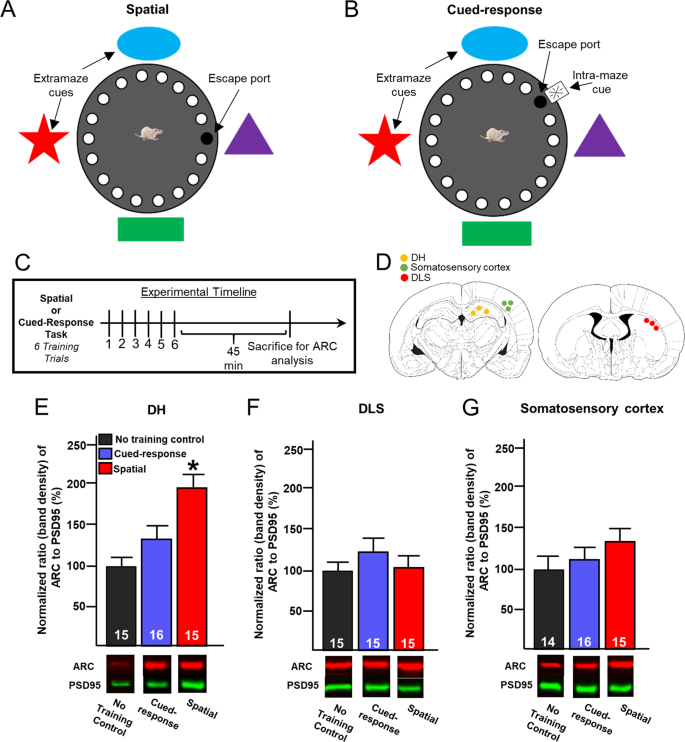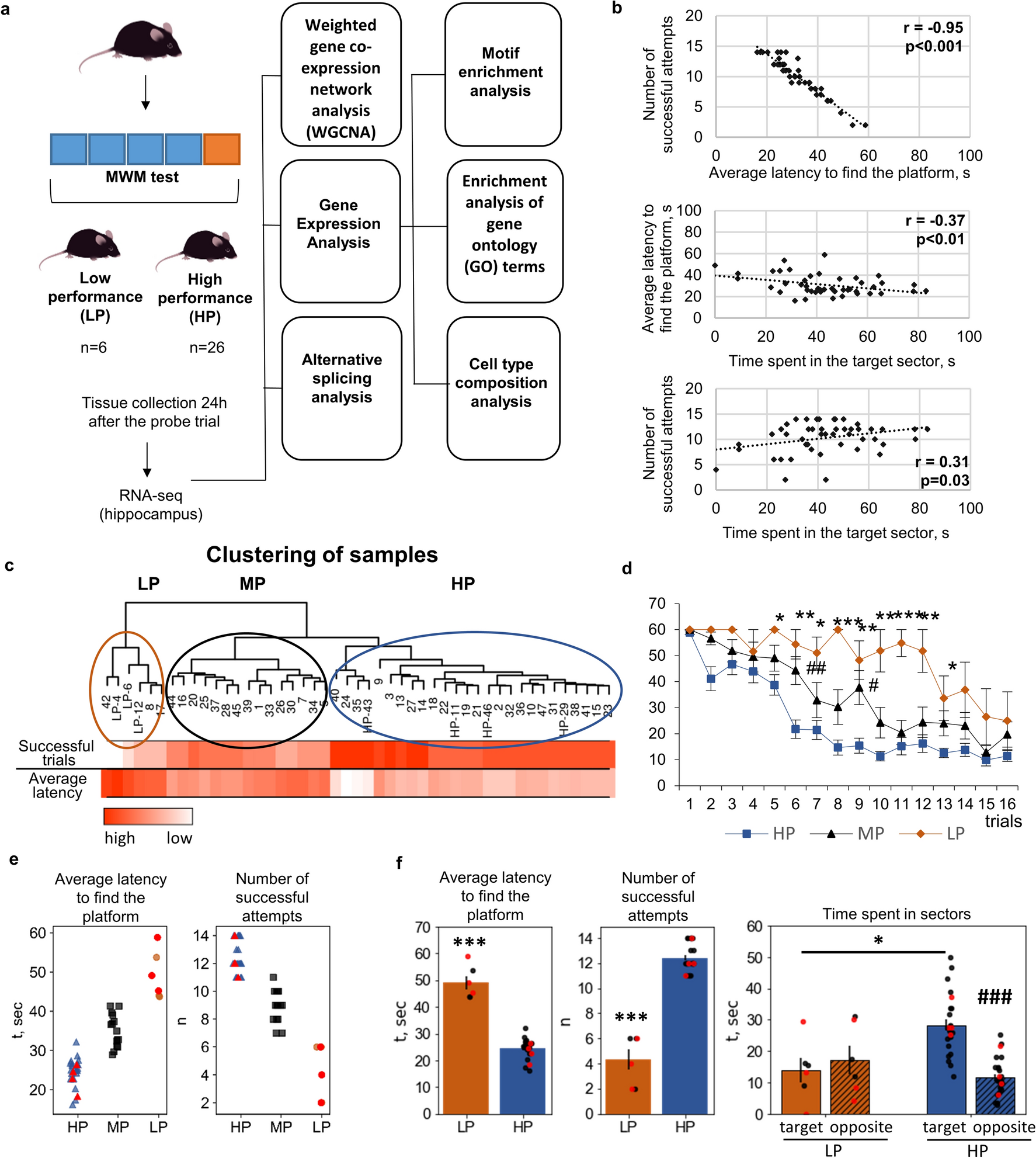Barnes Maze Protocol
The Barnes maze is a dry maze where rodents are trained to find an escape box hidden under the surface of a circular table by relying on extra-maze cues OLeary and Brown 2012. Therefore we shortened the protocol to include only 5 training trials to increase difficulty.
 Barnes Maze Procedure For Spatial Learning And Memory In
Barnes Maze Procedure For Spatial Learning And Memory In
We found cognitive deficits using this protocol using mainly measures from the probe day rather than the training trials.

Barnes maze protocol. An additional difference between our Barnes maze protocol and typical published protocols that may increase the difficulty of the task is that we allowed for a 48 h delay between the training trials and the probe day. Research Square does not conduct peer review prior to posting preprints. During escape training the older animals learned the task in 1 d while the younger animals.
The motivational drive is the rodents instinctive aversion for open spaces and natural preference for dark and sheltered spaces. Modified Barnes Maze Test. Europe PMC is an archive of life sciences journal literature.
Available in full text. Endogenous Anxiety and Stress Responses in Water Maze and Barnes Maze Spatial Memory Tasks Behavioural Brain Research. Barnes maze Although the BM task was first described by Carol Barnes in 1979 its usefulness was appreciated almost two decades later.
Mice show a decreased latency to reach the escape box over time. The Barnes maze is a modification of the Morris water maze and is useful for testing spatial memory. Following a single platform exposure in dim light on the day before training to encourage exploration animals were trained on the subsequent 2 d in bright light to find a hidden escape box and then underwent a memory test 24 h later.
This also decreased the effort involved with data analysis. Maze may be used to test either working or reference memory. Importantly we detected cognitive dysfunction already at 4-m of age in 3 Tg mice using the short Barnes-maze protocol.
The Barnes Maze is a valid alternative to the water maze to study spatial memory. The dry-land Barnes maze is widely used to measure spatial navigation ability in response to mildly aversive stimuli. It represents a well-established alternative to the more popular Morris Water maze and offers the advantage of being free from the potentially confounding influence of swimming behavior.
Barnes Maze for Rats or Mice optimized for Videotracking. The advantage over the water maze is that the Barnes Maze is easier to. The Modified Barnes Maze is thought to measure similar learning abilities as the DMP without forcing the subjects to perform a task under unnatural conditions ie.
The Barnes maze test consists of a non-aquatic test for memory and spatial learning. However simple quantification of latency mean speed distance and other parameters often result in only a partial understanding of mouse behavior. Over consecutive days performance eg.
Swimming in water. The maze was made from a circular 13-mm thick white PVC platform. Article CAS PubMed PubMed Central Google Scholar Bach ME Hawkins RD Osman M Kandel ER Mayford M 1995 Impairment of spatial but not.
Attar A Liu T Chan WTC Hayes J Nejad M Lei K Bitan G 2013 A shortened Barnes maze protocol reveals memory deficits at 4-months of age in the triple-transgenic mouse model of Alzheimers disease. Based on the Delayed Match-to-Place experiment conducted in a standard water maze tank the Modified Barnes Maze test assesses cognitive deficits in rodent models of CNS disorders. Thus we adapted the Barnes maze for use with juvenile rats.
This assumes that the amount of delay is related to the difficulty of the task by requiring more neural processing for consolidated learning and long-term memory. Barnes Maze Procedure for Spatial Learning and Memory in Mice BIO-PROTOCOL doi 1021769bioprotoc2744. Herein the Barnes maze experimental setup.
The Barnes maze is a dry-land based rodent behavioral paradigm for assessing spatial learning and memory that was originally developed by its namesake Carol Barnes. Latency to locate escape cage of control subjects improves indicative of normal learning and memoryDifferences between rats and mice necessitate apparatus and methodology changes that are detailed here. The ability to test learning and memory in 4-m old 3 Tg mice using a shortened Barnes maze protocol offers considerable time and cost savings and provides support for the utilization of this model at pre-pathology stages for therapeutic studies.
This is a protocol preprint a preliminary version of a manuscript that has not completed peer review at a journal. Employed a typical Barnes maze protocol of 15 training trials but found no significant deficits in aged mice. The protocol was adapted from Sunyer et al.
The posting of a preprint on this server should not be interpreted as an endorsement of its validity or suitability for dissemination as established information or for guiding clinical practice. There are few variations of the protocol described in the litera-ture but the basic protocol of the task allows to assess spatial working memory spatial reference memory short andor long. T maze tasks have.
Search worldwide life-sciences literature Search. Full Text Open PDF Abstract.
 Barnes Maze An Overview Sciencedirect Topics
Barnes Maze An Overview Sciencedirect Topics
 Barnes Maze Procedure For Spatial Learning And Memory In
Barnes Maze Procedure For Spatial Learning And Memory In
 Barnes Maze Diagram With Quadrants The Barnes Maze Is Made Up Of A Download Scientific Diagram
Barnes Maze Diagram With Quadrants The Barnes Maze Is Made Up Of A Download Scientific Diagram
 Barnes Maze Procedure For Spatial Learning And Memory In
Barnes Maze Procedure For Spatial Learning And Memory In
 Barnes Maze Diagram With Quadrants The Barnes Maze Is Made Up Of A Download Scientific Diagram
Barnes Maze Diagram With Quadrants The Barnes Maze Is Made Up Of A Download Scientific Diagram
 Optogenetic Activation Of Lc Catecholamine Axons In The Dorsal Download Scientific Diagram
Optogenetic Activation Of Lc Catecholamine Axons In The Dorsal Download Scientific Diagram
 Experimental Schedule And Barnes Maze Test A Experimental Download Scientific Diagram
Experimental Schedule And Barnes Maze Test A Experimental Download Scientific Diagram
Plos One A Shortened Barnes Maze Protocol Reveals Memory Deficits At 4 Months Of Age In The Triple Transgenic Mouse Model Of Alzheimer S Disease
 A Modified Barnes Maze For Juvenile Rats Bio Protocol
A Modified Barnes Maze For Juvenile Rats Bio Protocol
 A Modified Barnes Maze For An Accurate Assessment Of Spatial Learning In Mice Sciencedirect
A Modified Barnes Maze For An Accurate Assessment Of Spatial Learning In Mice Sciencedirect
 A Modified Barnes Maze For An Accurate Assessment Of Spatial Learning In Mice Sciencedirect
A Modified Barnes Maze For An Accurate Assessment Of Spatial Learning In Mice Sciencedirect
 The Medial Entorhinal Cortex Mediates Basolateral Amygdala Effects On Spatial Memory And Downstream Activity Regulated Cytoskeletal Associated Protein Expression Neuropsychopharmacology
The Medial Entorhinal Cortex Mediates Basolateral Amygdala Effects On Spatial Memory And Downstream Activity Regulated Cytoskeletal Associated Protein Expression Neuropsychopharmacology
 Morris Water Maze Behavioral And Functional Neuroscience Laboratory Stanford Medicine
Morris Water Maze Behavioral And Functional Neuroscience Laboratory Stanford Medicine
 Barnes Maze Performance Is Impaired In Aged Mice A B Training Download Scientific Diagram
Barnes Maze Performance Is Impaired In Aged Mice A B Training Download Scientific Diagram
 Barnes Maze Test Qps Neuropharmacology
Barnes Maze Test Qps Neuropharmacology
 Genes Associated With Cognitive Performance In The Morris Water Maze An Rna Seq Study Scientific Reports
Genes Associated With Cognitive Performance In The Morris Water Maze An Rna Seq Study Scientific Reports
 Reduced Pathology And Improved Behavioral Performance In Alzheimer S Disease Mice Vaccinated With Hsv Amplicons Expressing Amyloid B And Interleukin 4 Molecular Therapy
Reduced Pathology And Improved Behavioral Performance In Alzheimer S Disease Mice Vaccinated With Hsv Amplicons Expressing Amyloid B And Interleukin 4 Molecular Therapy
 Neurogenesis Induced Forgetting Is Associated With Reduced Neuronal Activity In Ca1 During Context Fear Memory Retrieval Biorxiv
Neurogenesis Induced Forgetting Is Associated With Reduced Neuronal Activity In Ca1 During Context Fear Memory Retrieval Biorxiv
 Barnes Maze Performance When Three Barnes Maze Testing Days Each With Download Scientific Diagram
Barnes Maze Performance When Three Barnes Maze Testing Days Each With Download Scientific Diagram
Posting Komentar untuk "Barnes Maze Protocol"